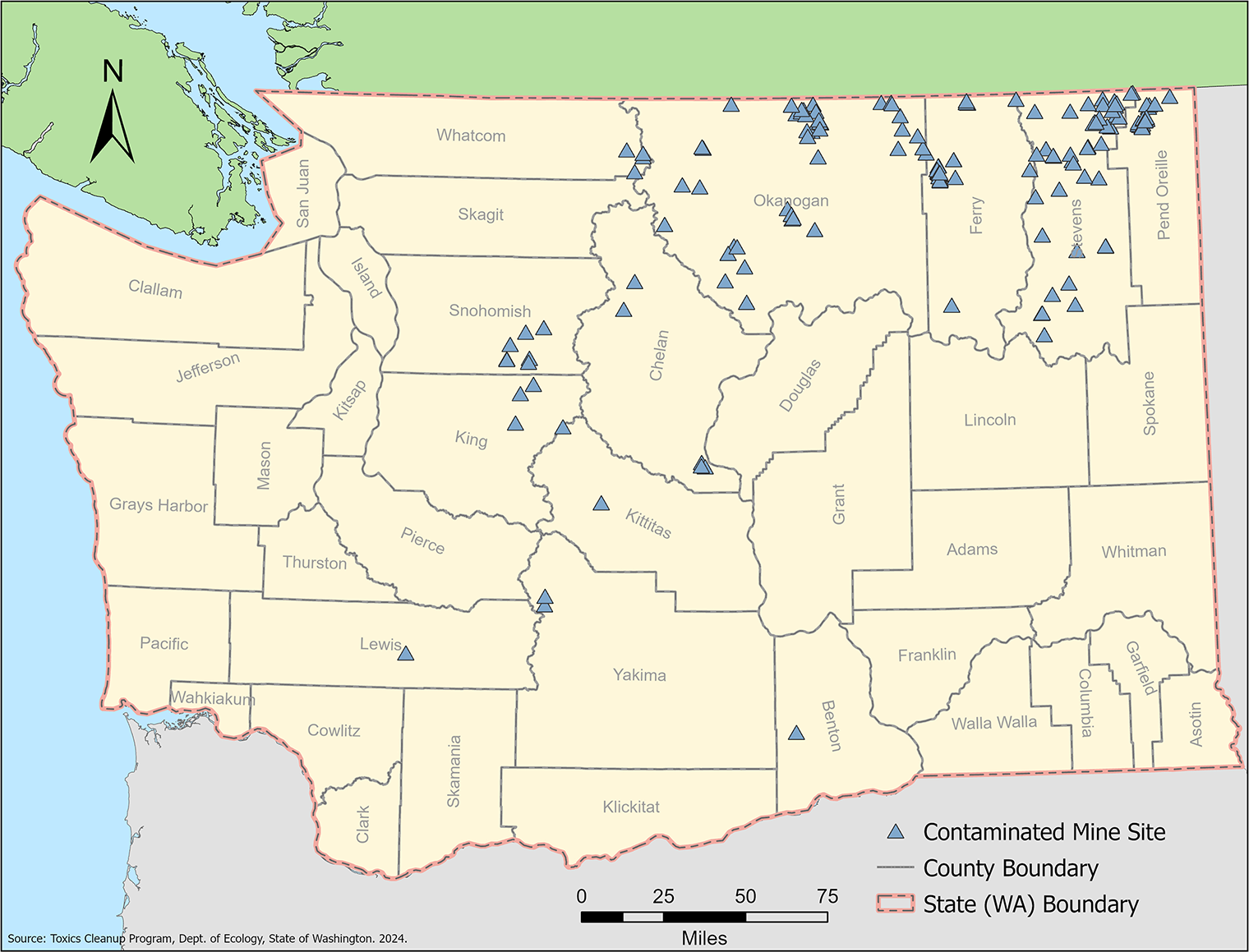Contaminated mine sites
Known contaminated mine sites.
Since the early 1800s, miners in Washington have searched for metals such as copper, gold, lead, magnesium, silver, uranium, and zinc. Mining for metals is called hardrock mining, because of the types of rock where metals are found. Hardrock mining in Washington state peaked in the 1940s, during World War II.
Unfortunately, many of these sites may be ongoing sources of environmental contamination and other hazards. We know of nearly 250 hardrock mining sites that are no longer in operation and have some level of environmental contamination. If left alone, these sites can harm the environment, prevent beneficial use of land, and endanger people’s health and safety.
Common hazards at mine sites
Acid mine drainage.
Mine opening above unstable, contaminated slope.
Mine tailings eroding into creek.
Old structures can contain contaminated mine waste and other safety hazards.
Environmental contamination
- Acid mine/rock drainage (AMD/ARD)
- Toxic releases to groundwater, surface water, and soil
- Air emissions and downwind deposition
- Sedimentation
- Erosion
Physical and safety hazards
- Unstable slopes and impoundments
- Subsidence
- Mine openings and shafts
- Hazardous structures and equipment
- Unused and unstable explosives
How to find out if your property has hardrock mining contamination
If you believe your property may contain environmental contamination from a mine, we can visit the property to visually inspect the area and assess risks it may pose. We are also able to help with sampling. Sampling will help you find out if your site needs cleanup or not.
Not all hardrock mining sites are contaminated. If initial sampling doesn’t show concentrations of contamination above the cleanup levels, no cleanup will be needed. Consult the model remedy for cleanup levels for different metals.
Cleaning up hardrock mining contamination
If contamination is confirmed above state cleanup levels, you can:
-
Use one of our model remedies if:
-
Your property contains 2,000 cubic yards or less of mine waste (soil, waste rock, or tailings)
-
Metals are the only suspected contaminants
-
Sediment, surface water, and groundwater are not suspected to be contaminated.
-
-
Join our Voluntary Cleanup Program and receive technical help for independently cleaning up mine waste on your property.
How Ecology is addressing contamination from mines
Ecology has a dedicated team of professionals, working out of the Central Regional Office in Yakima, focused on identifying, inventorying, cleaning up, and monitoring contaminated mine sites across the state.
Related links
- Inactive and Abandoned Mine Land Reports Index (Washington Dept. of Natural Resources)
- Washington Geologic Information Portal (Washington Dept. of Natural Resources)
- Appendix A & B of Hardrock Mining Framework (EPA)
- What’s in My Neighborhood, Ecology's map of cleanup sites
Contact information
Justin Rice
Contaminated Mine Site Program Engineer
justin.rice@ecy.wa.gov
509-724-8268
John Zinza
Cleanup Project Manager
john.zinza@ecy.wa.gov
509-225-0304






